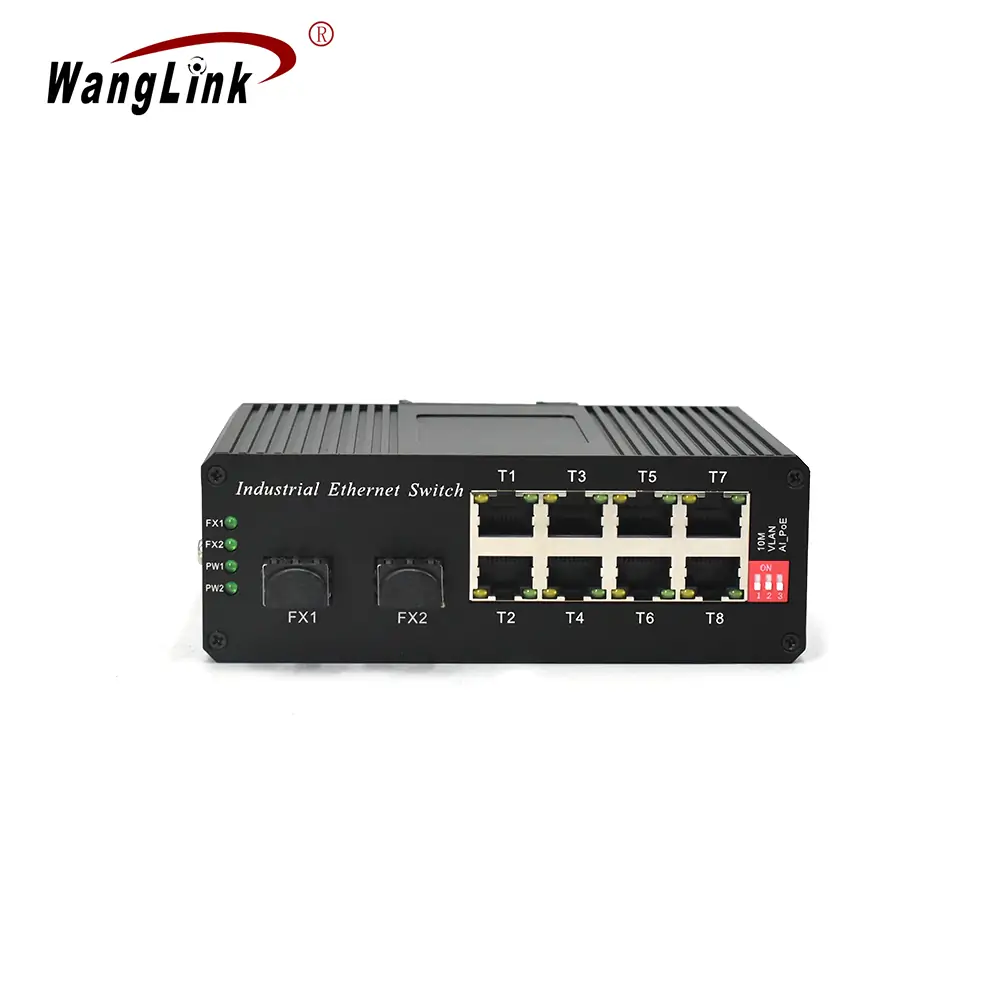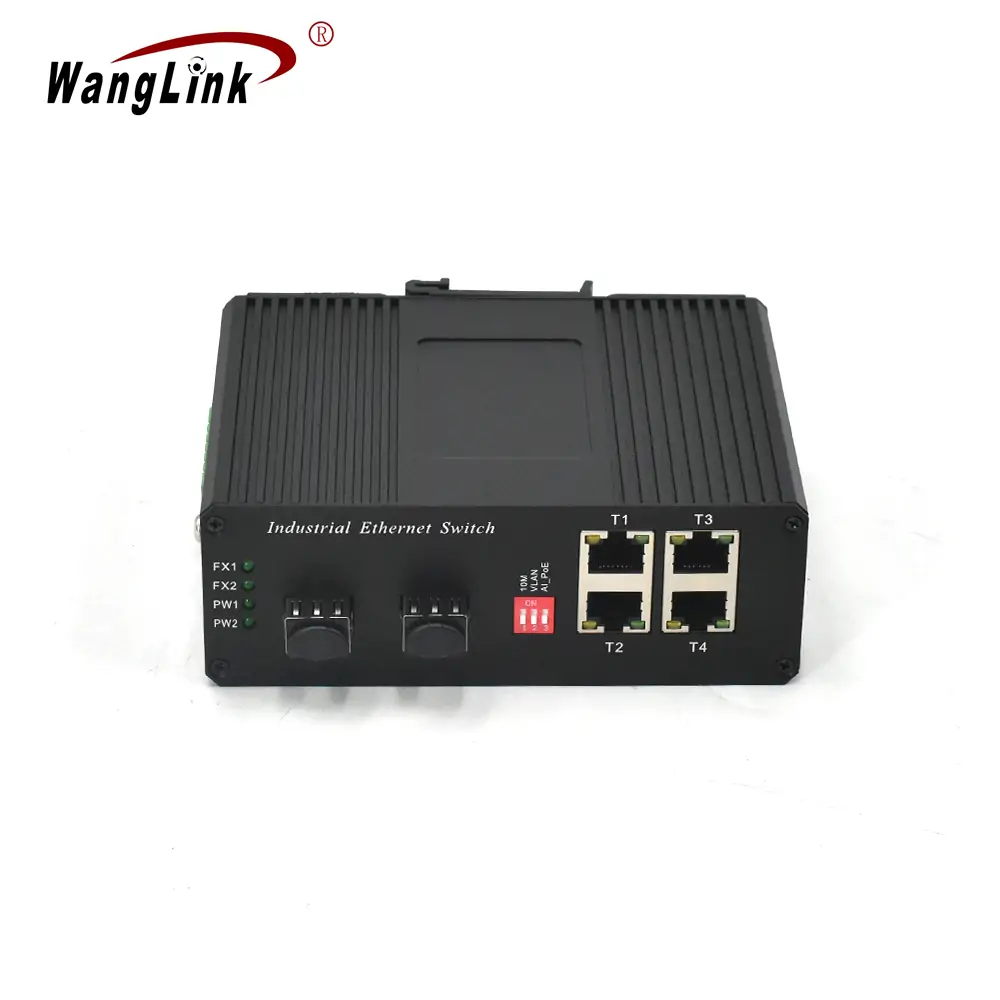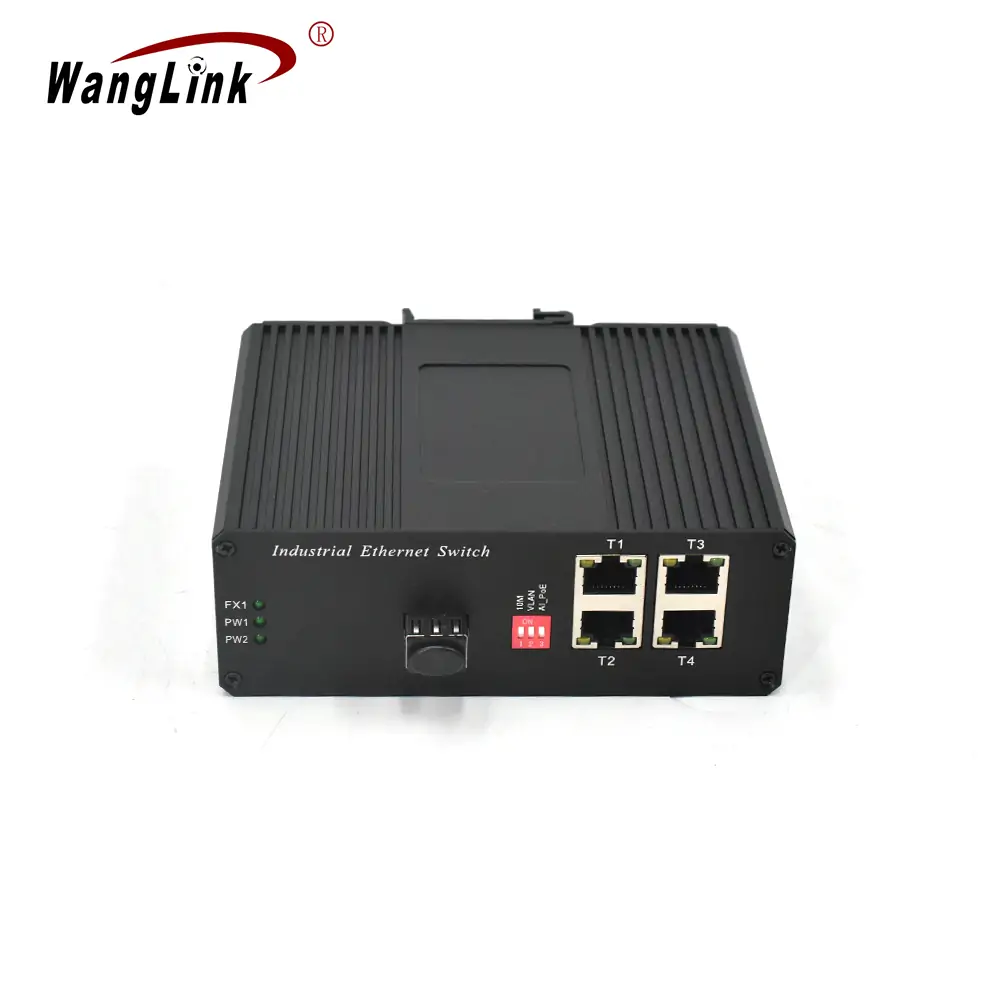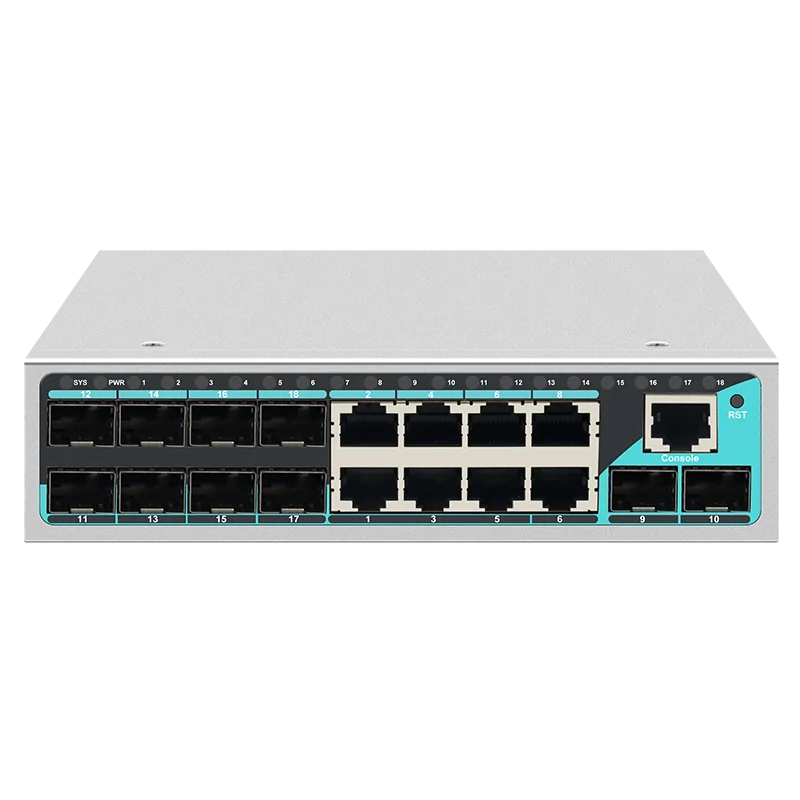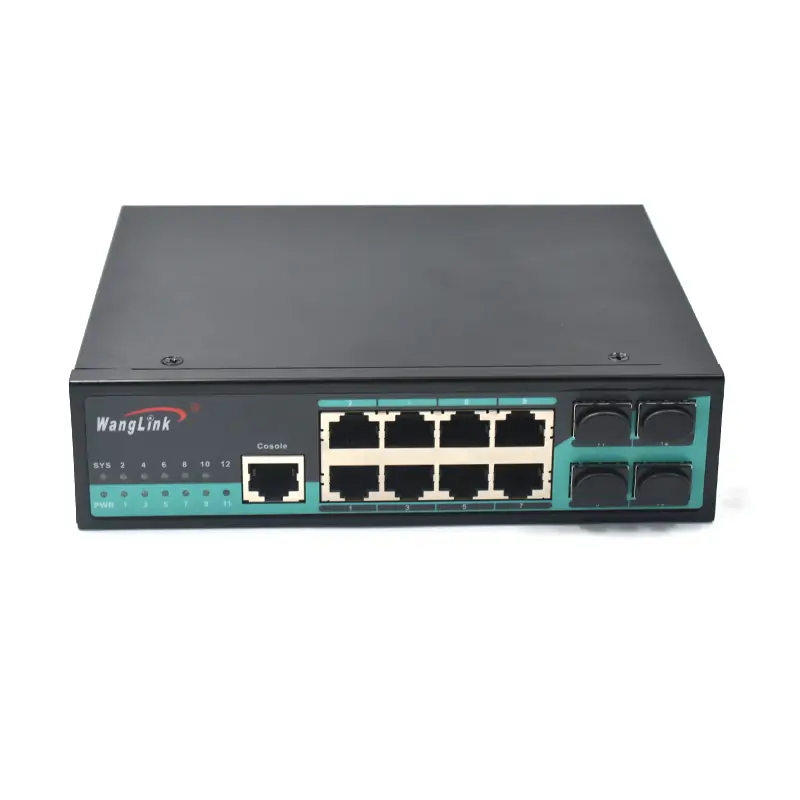Ring Ethernet Switch: Complete Guide to Redundant Network Solutions for Industrial Applications
In today’s interconnected industrial landscape, network reliability is paramount. A single point of failure can result in costly downtime, production losses, and safety concerns. This is where ring ethernet switches become indispensable, offering robust redundancy solutions that ensure continuous network operation even when individual components fail.

Understanding Ring Ethernet Switch Technology
What is a Ring Ethernet Switch?
A ring ethernet switch is a specialized network device designed to operate within a ring topology, where network devices are connected in a circular configuration. This topology provides automatic failover capabilities, ensuring that if one link in the ring fails, data can still flow through the alternative path, maintaining network connectivity.
Ring topology networks utilize specific protocols such as:
- Rapid Spanning Tree Protocol (RSTP)
- Multiple Spanning Tree Protocol (MSTP)
- Ethernet Ring Protection (ERP)
- Industrial Ethernet protocols like PROFINET and EtherNet/IP
Key Benefits of Ring Network Architecture
The implementation of ring ethernet switches offers numerous advantages:
- Zero Downtime Recovery: Sub-second failover times ensure minimal service interruption
- Cost-Effective Redundancy: Eliminates the need for expensive parallel infrastructure
- Simplified Network Management: Centralized monitoring and configuration
- Scalable Design: Easy expansion without compromising network integrity
- Enhanced Fault Tolerance: Multiple failure scenarios can be handled gracefully
Ring Network Protocols and Standards
Spanning Tree Protocol Family
The Spanning Tree Protocol (STP) family forms the backbone of ring ethernet switch operations:
| Protocol | Convergence Time | Features | Best Use Case |
|---|---|---|---|
| STP (802.1D) | 30-50 seconds | Basic loop prevention | Legacy networks |
| RSTP (802.1w) | 1-6 seconds | Rapid convergence | Modern enterprise |
| MSTP (802.1s) | 1-6 seconds | Multiple VLANs support | Complex networks |
| ERPS (G.8032) | <50ms | Carrier-grade protection | Service provider |
Industrial Ring Protocols
For industrial applications, specialized protocols offer enhanced performance:
- PROFINET MRP (Media Redundancy Protocol): Provides <200ms recovery time
- EtherNet/IP DLR (Device Level Ring): Optimized for automation networks
- HSR (High-availability Seamless Redundancy): Zero-loss switching for critical applications
Implementation Strategies for Ring Ethernet Networks
Network Design Considerations
When implementing a ring ethernet switch network, several factors must be considered:
1. Ring Size and Topology
- Optimal ring size: 8-16 switches for best performance
- Geographic distribution: Minimize physical cable distances
- Redundant paths: Ensure alternative routes for all critical connections
2. Switch Selection Criteria
Choosing the right ring ethernet switch involves evaluating:
- Port density: Match current and future connectivity needs
- Protocol support: Ensure compatibility with existing infrastructure
- Environmental ratings: IP65/67 for harsh industrial conditions
- Power requirements: PoE+ capability for powered devices
- Management features: SNMP, web interface, CLI access
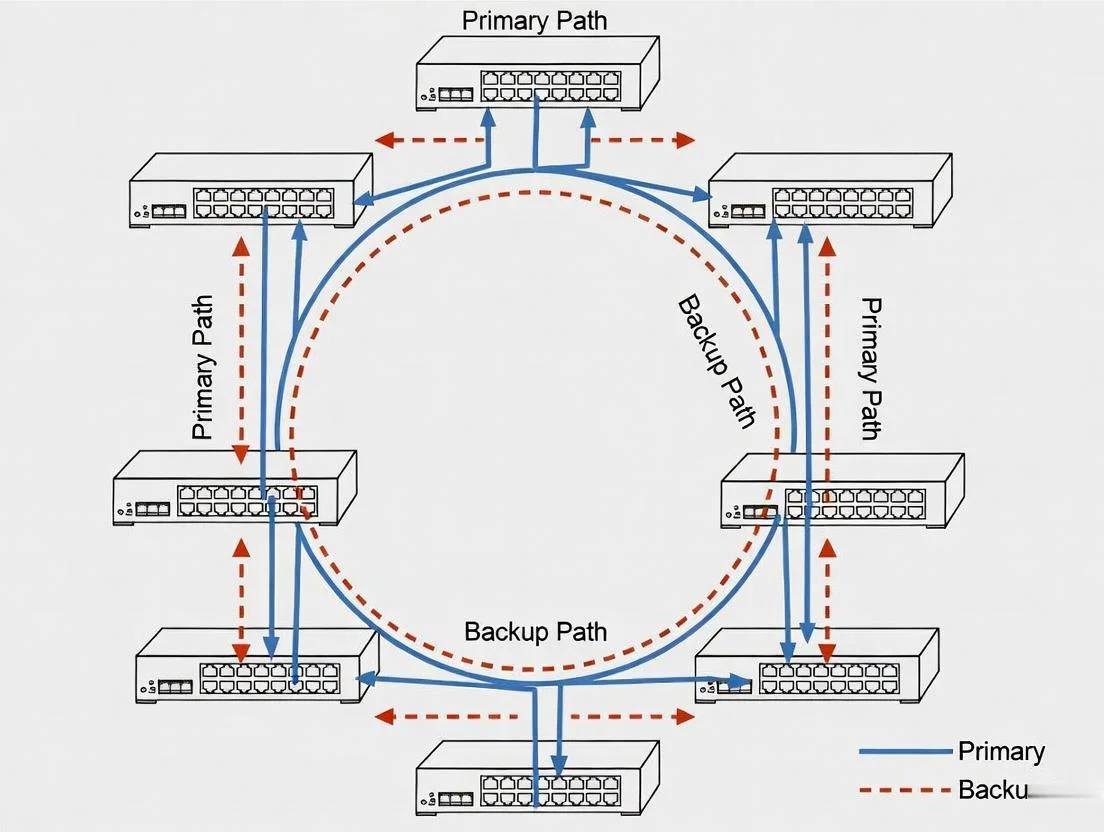
Case Study: Manufacturing Plant Network Upgrade
Challenge: A automotive manufacturing facility experienced frequent network outages due to single points of failure in their linear network topology.
Solution: Implementation of Wanglink’s ISG808M industrial switches in a ring configuration.
Results:
- 99.99% uptime achieved over 12 months
- <50ms failover time during planned maintenance
- 30% reduction in network management overhead
- Zero production losses due to network failures
The facility deployed 12 ISG808M switches across three production lines, creating redundant rings that could isolate failures while maintaining connectivity to critical systems.
Advanced Ring Network Features
Quality of Service (QoS) in Ring Networks
Ring ethernet switches must handle varying traffic priorities effectively:
Traffic Classification
- Real-time control data: Highest priority (Class 7)
- Safety systems: High priority (Class 6)
- Process monitoring: Medium priority (Class 4)
- Administrative traffic: Low priority (Class 1)
Bandwidth Management
- Traffic shaping: Prevent network congestion
- Rate limiting: Control individual device bandwidth
- Priority queuing: Ensure critical data transmission
Network Security in Ring Topologies
Security considerations for ring ethernet networks include:
- Port security: MAC address filtering and learning limits
- VLAN segmentation: Isolate different network segments
- Access control lists: Filter traffic based on defined rules
- Network monitoring: Detect and respond to security threats
For comprehensive network monitoring strategies, refer to our guide on Ethernet Switch Port Mirroring.
Selecting the Right Ring Ethernet Switch
Technical Specifications Comparison
When evaluating ring ethernet switches, consider these key specifications:
| Feature | Entry Level | Professional | Industrial Grade |
|---|---|---|---|
| Port Count | 4-8 ports | 16-24 ports | 24-48 ports |
| Switching Capacity | 8.8 Gbps | 52 Gbps | 176 Gbps |
| Operating Temperature | 0°C to 50°C | -10°C to 60°C | -40°C to 75°C |
| MTBF | 200,000 hours | 300,000 hours | 500,000 hours |
| Redundancy Protocols | RSTP | RSTP, ERPS | All protocols |
| Management | Web only | Web, SNMP | Full CLI, API |
Environmental Considerations
Industrial ring ethernet switches must withstand harsh conditions:
Physical Requirements
- Vibration resistance: IEC 60068-2-6 compliance
- Shock tolerance: 50G operational, 100G non-operational
- Humidity range: 5% to 95% non-condensing
- Altitude operation: Up to 2000m above sea level
Electromagnetic Compatibility
- EMI/EMC compliance: FCC Part 15, CE marking
- Surge protection: Built-in protection circuits
- Grounding requirements: Proper earth connections

Wanglink’s Ring Ethernet Switch Solutions
Product Portfolio Overview
Wanglink offers comprehensive ring ethernet switch solutions designed for various industrial applications:
Industrial PoE Switches
Our ISL802P and ISL402P models provide:
- IEEE 802.3at PoE+ support up to 30W per port
- Ring redundancy protocols for network resilience
- DIN rail mounting for easy installation
- Extended temperature range operation
Managed Industrial Switches
The ISG804M series offers advanced management features:
- Layer 2+ switching capabilities
- VLAN and QoS configuration
- SNMP v1/v2c/v3 support
- Ring protection protocols
Customization Services
Wanglink’s customization capabilities include:
- Hardware modifications: Custom port configurations and connectors
- Firmware development: Specialized protocol implementations
- Enclosure design: Application-specific housing solutions
- Branding services: OEM/ODM labeling and packaging
For detailed selection guidance, consult our comprehensive guide on How To Choose The Right Switch As A Network Engineer.
Installation and Configuration Best Practices
Physical Installation Guidelines
Proper installation ensures optimal ring ethernet switch performance:
Mounting Considerations
- DIN rail installation: Ensure secure mounting clips
- Ventilation clearance: Maintain 50mm spacing around units
- Cable management: Use proper strain relief and routing
- Grounding: Establish reliable earth connections
Power Supply Requirements
- Redundant power inputs: Dual 24VDC or 48VDC supplies
- Power consumption calculation: Include PoE load requirements
- Surge protection: Install appropriate protection devices
- Battery backup: Consider UPS systems for critical applications
Network Configuration Steps
Initial Setup Process
- IP address assignment: Configure management interfaces
- VLAN creation: Segment network traffic appropriately
- Ring protocol configuration: Enable RSTP or ERPS
- QoS policy setup: Define traffic prioritization rules
- Security configuration: Implement access controls
Monitoring and Maintenance
Regular monitoring ensures continued network reliability:
- Performance metrics: Monitor bandwidth utilization and error rates
- Environmental conditions: Track temperature and power consumption
- Firmware updates: Maintain current software versions
- Backup configurations: Regular configuration backups
For detailed installation guidance, review our PoE Switch Installation and Management Tips.
Troubleshooting Common Ring Network Issues
Network Loop Detection and Resolution
Ring networks can experience various issues that require systematic troubleshooting:
Common Symptoms
- Broadcast storms: Excessive network traffic
- Intermittent connectivity: Sporadic device communication
- Slow convergence: Extended failover times
- Configuration conflicts: Protocol mismatches
Diagnostic Tools
- Network analyzers: Wireshark for packet analysis
- SNMP monitoring: Real-time performance metrics
- Cable testers: Physical layer verification
- Protocol analyzers: Ring protocol state monitoring
Performance Optimization Techniques
Optimizing ring ethernet switch performance involves:
Network Tuning Parameters
- Hello timer adjustment: Balance detection speed vs. stability
- Max age timer: Configure appropriate timeout values
- Forward delay: Optimize learning state duration
- Path cost calculation: Ensure optimal route selection
Future Trends in Ring Ethernet Technology
Emerging Technologies
The evolution of ring ethernet switches continues with new developments:
Time-Sensitive Networking (TSN)
- Deterministic latency: Guaranteed packet delivery times
- Traffic scheduling: Precise bandwidth allocation
- Synchronization: IEEE 1588 PTP integration
Software-Defined Networking (SDN)
- Centralized control: Programmable network behavior
- Dynamic reconfiguration: Adaptive network responses
- Automation capabilities: Self-healing network functions
Industry 4.0 Integration
Ring ethernet switches play crucial roles in Industry 4.0 implementations:
- IoT connectivity: Massive device integration
- Edge computing: Distributed processing capabilities
- Artificial intelligence: Intelligent network management
- Predictive maintenance: Proactive failure prevention
To understand the differences between various switch types, explore our article on Differences Between Layer 2 And Layer 3 Switches.
Frequently Asked Questions (FAQ)
Q1: What is the maximum number of switches recommended in a ring topology?
A: For optimal performance, we recommend limiting ring networks to 16-20 switches. Larger rings may experience increased convergence times and reduced fault tolerance. Consider implementing multiple smaller rings with inter-ring connections for larger networks.
Q2: How fast is the failover time in a ring ethernet network?
A: Failover times depend on the protocol used:
- RSTP: 1-6 seconds
- ERPS (G.8032): <50 milliseconds
- Industrial protocols (MRP, DLR): <200 milliseconds
The actual time also depends on network size and switch processing capabilities.
Q3: Can I mix different switch brands in a ring network?
A: Yes, but ensure all switches support the same ring protocol standards (IEEE 802.1w, G.8032, etc.). However, using switches from the same manufacturer like Wanglink ensures better compatibility and unified management capabilities.
Q4: What happens if multiple links fail simultaneously in a ring network?
A: If multiple non-adjacent links fail, the ring can still maintain connectivity. However, if failures segment the ring into isolated sections, those segments will lose connectivity to each other. This is why proper network design includes multiple rings and redundant connections.
Q5: Do I need special cables for ring ethernet networks?
A: Standard Cat5e/Cat6 cables work fine for most applications. However, industrial environments may require ruggedized cables with enhanced shielding, temperature ratings, and mechanical protection. Fiber optic connections are recommended for longer distances and harsh electromagnetic environments.
Q6: How do I monitor the health of my ring network?
A: Use SNMP-based monitoring tools to track:
- Ring protocol status and topology changes
- Port utilization and error statistics
- Environmental conditions (temperature, power)
- Device availability and response times
Many switches also provide web-based dashboards for real-time monitoring.
Q7: What’s the difference between managed and unmanaged ring switches?
A: Managed switches offer:
- Advanced ring protocol support (ERPS, MSTP)
- VLAN and QoS configuration
- Remote monitoring and management
- Security features and access controls
Unmanaged switches provide basic ring functionality but lack advanced configuration options.
Conclusion
Ring ethernet switches represent a critical technology for ensuring network reliability in industrial and enterprise environments. By implementing proper ring topologies with quality switches like those offered by Wanglink, organizations can achieve near-zero downtime while maintaining cost-effective network infrastructure.
The key to successful ring network implementation lies in careful planning, proper switch selection, and ongoing monitoring. With Wanglink’s 13 years of manufacturing experience and comprehensive product portfolio, including our industrial-grade ring ethernet switch solutions, you can build robust networks that meet the most demanding requirements.
For more information about our ring ethernet switch solutions or to discuss your specific requirements, contact our expert team at [email protected] or WhatsApp +8613544167258. Visit our products page to explore our complete range of industrial networking solutions.
Whether you need standard products or custom solutions, Wanglink’s one-stop OEM and ODM services ensure you get exactly what your application requires. With our $30 million inventory and fast delivery capabilities, we’re ready to support your network infrastructure needs today.

